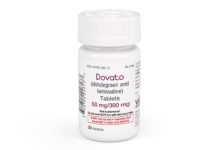The Global Fund to Fight AIDS, Tuberculosis and Malaria is a major financier of national HIV responses and a vital source of prevention investments. By 2015, the Global Fund supported 3.6 million pregnant women to receive ARV prophylaxis to prevent transmission to their unborn children and distributed 5.3 billion condoms.
In its new strategy (2017-2022), the Global Fund has set ambitious new targets for HIV prevention. For example, the Fund aims to achieve a 38% reduction in new infections over the 2015-2022 period, including a 58% reduction in HIV incidence in adolescent girls and young women aged 15-24.
Investments in HIV prevention are particularly vital for key and vulnerable populations, who face disproportionate burden of disease as well as disproportionate barriers to accessing services.
But is the Global Fund investing enough in HIV prevention to meet its targets?
The Joint United Nations Programme on HIV/AIDS (UNAIDS) estimates that ending AIDS by 2030 will cost about $25 billion a year. About a quarter (26%) of this amount is required for HIV prevention.
ICASO and EANNASO examined funding requests and signed grant agreements from a sample of 25 African countries over the 2014-2016 funding cycle to determine how much the Global Fund is investing in HIV prevention interventions.
The aim of this discussion paper is to contribute to civil society and community groups’ advocacy efforts to increase Global Fund investments in HIV prevention interventions during the 2017-2019 funding cycle.
Key Findings
• Among the funding requests examined, an average of 16% was dedicated to HIV prevention.
• Of the signed grant agreements examined, an average of 15% of the total funding invested was dedicated to HIV prevention.
• The Global Fund’s investments in HIV prevention are largely in line with disease burden. Countries with higher numbers of new infections request and receive more HIV prevention funding.
• Among the sample, 71% of HIV prevention funding is implemented by a government Principal Recipient (PR), 24% by a civil society PR, and 5% by a UN agency PR.
• Advocacy from civil society and communities is absolutely vital, particularly on urging countries to request greater HIV prevention funding for key populations and adolescent girls and young women


 ПОИСК ПО САЙТУ
ПОИСК ПО САЙТУ  поиск по ресурсному центру
поиск по ресурсному центру 



